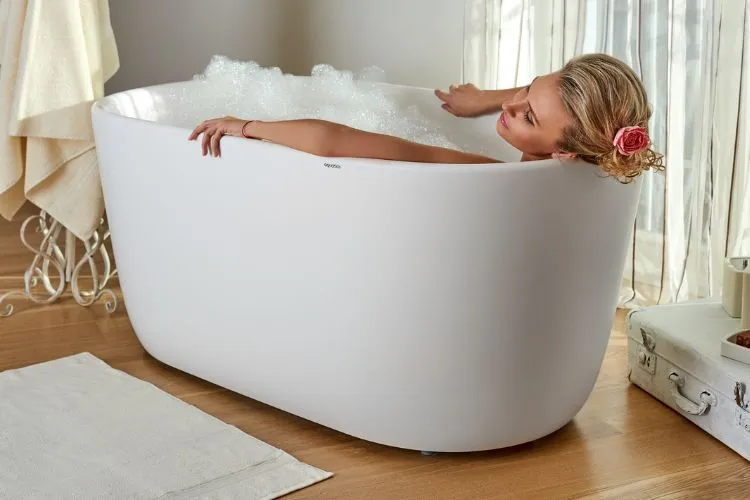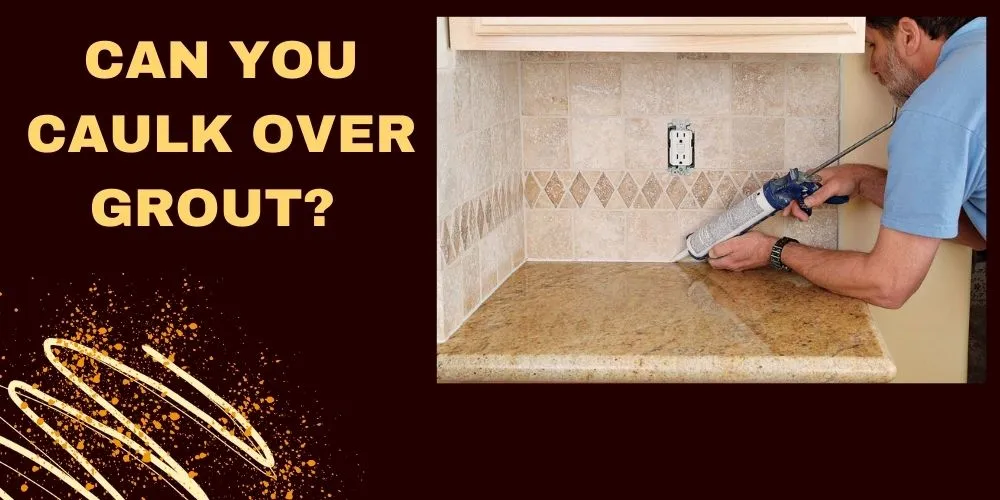Relaxing in a jetted tub is a luxurious way to end the day. Epsom salt is often touted for its health benefits, and many people wonder if they can elevate their soak by combining the two.
But, can you use Epsom salt in a jetted tub?
Here’s what you need to know about using Epsom salt in a jetted tub safely.

What is Epsom Salt?
Epsom salt is not actually salt but a naturally occurring mineral compound of magnesium and sulfate. It is named after a bitter saline spring in Epsom, Surrey, England.
This compound is known for its health benefits, including easing muscle pain, relieving stress, and reducing inflammation.
Understanding Jetted Tubs
Jetted tubs, also known as whirlpool baths or Jacuzzis, use a system of water jets to create a massaging effect. These tubs come in two types: air jetted and water jetted.
The former blows air into the water, creating bubbles, while the latter circulates water through jets. These systems can make the tub more sensitive to what is added to the water.
Can You Use Epsom Salt in a Jetted Tub?
The answer to this question is not straightforward. While many manufacturers advise against using any additives in jetted tubs, some say it is possible with caution.
The concern lies in the fact that Epsom salt might harden inside the jets if not fully dissolved and lead to blockages or damage.
Pro Tips for Using Epsom Salt Safely
If you do choose to use Epsom salt in your jetted tub, there are some best practices to follow. First, make sure the salt is completely dissolved before turning on the jets.
This usually means adding the Epsom salt while the tub is filling and stirring it in. Secondly, only use a small amount to start—a couple of cups is sufficient.

It’s also crucial to regularly maintain and clean your jetted tub. After using Epsom salt, run fresh water through the jets for a few minutes to flush out any residue. It’s advisable to consult your tub’s manufacturer’s guidelines or a professional plumber to avoid potential issues.
The Science Behind Epsom Salt and Hydrotherapy
Epsom salt, composed of magnesium and sulfate, is renowned for its therapeutic properties. When dissolved in warm water, it breaks down into magnesium and sulfate ions, which are then absorbed through the skin.
This process can help increase magnesium levels in the body, promoting relaxation, easing muscle tension, and reducing inflammation. Hydrotherapy, on the other hand, involves the use of water for pain relief and treatment.
The warm water in a jetted tub improves circulation and soothes sore muscles, while the massaging action of the jets addresses specific areas of discomfort.
By combining Epsom salt with hydrotherapy, the physical benefits are twofold: hydrotherapy’s warm water and massage alleviate musculoskeletal stress, while Epsom salt’s magnesium offers a natural remedy for muscular pain, creating a synergistic effect that enhances relaxation and healing.
This complementary therapeutic approach is why many seek the healing embrace of an Epsom salt-infused jetted tub soak.
Potential Risks and How to Avoid Them
Using Epsom salt in a jetted tub poses certain risks, primarily associated with the tub’s jets and plumbing system. If Epsom salt doesn’t fully dissolve, it can crystallize within the jets and pipes, potentially causing blockages or damaging the system over time.
Additionally, frequent use of Epsom salt without proper cleaning can lead to sediment buildup, affecting the tub’s performance and hygiene. To mitigate these risks, users should first ensure that the Epsom salt is thoroughly dissolved in the bathwater before activating the jets.
Starting with a smaller amount, such as a couple of cups, can help prevent oversaturation. After each use, it’s essential to flush the system by running clean, warm water through the jets for at least 15 minutes to clear out any residual salt.
Regular maintenance, including a deeper cleaning of the jets and plumbing system as recommended by the manufacturer, can further prevent issues, ensuring the longevity and safe operation of the jetted tub.
Jetted Tub Materials and Epsom Salt Compatibility
Jetted tubs are commonly made from materials such as acrylic, fiberglass, ceramic, and enameled cast iron. Each material has distinct characteristics and varying levels of compatibility with Epsom salt.
Acrylic, being lightweight and warm to the touch, is the most popular for jetted tubs. It is generally resistant to Epsom salt, but prolonged exposure can cause dullness or weakening of the finish. Fiberglass, similar to acrylic, offers a good resistance to salt but can gradually wear down with frequent use of harsh additives.

Ceramic and enameled cast iron are more robust against chemical exposure, making them highly durable in salt use. However, the porosity of ceramic might still necessitate regular thorough cleanings to prevent salt accumulation in pores which could degrade the glaze over time.
To safeguard these materials, it’s crucial to ensure that the Epsom salt is fully dissolved before entering the tub, and regular rinsing and cleaning of the tub post-soak will help maintain its integrity and appearance. Regular maintenance checks are also advisable to catch any early signs of material degradation.
Frequently Asked Questions (FAQs)
How much Epsom Salt is safe to use in a jetted tub?
Typically, a couple of cups of Epsom salt should be enough for a standard-sized jetted tub. Remember to fully dissolve the salt in warm water.
Can other types of bath salts be used in jetted tubs?
It’s best to avoid using oils or foaming bath products, as these can cause residue build-up or damage the system. If you wish to use other bath salts, ensure they are jetted-tub-safe and always consult the tub’s manual first.
How to properly clean the jetted tub after salt use?
After using Epsom salt, fill the tub with warm water above the jets, turn the jets on, and let them run for 15 minutes to flush out any residue. Then, drain and rinse the tub thoroughly.
Conclusion:
While some people successfully use Epsom salt in their jetted tubs, caution and moderation are key.
It’s vital to follow manufacturer recommendations and perform regular maintenance to ensure a worry-free, relaxing experience.
If used carefully, Epsom salt can enhance the jetted tub experience, providing both relaxation and health benefits.


